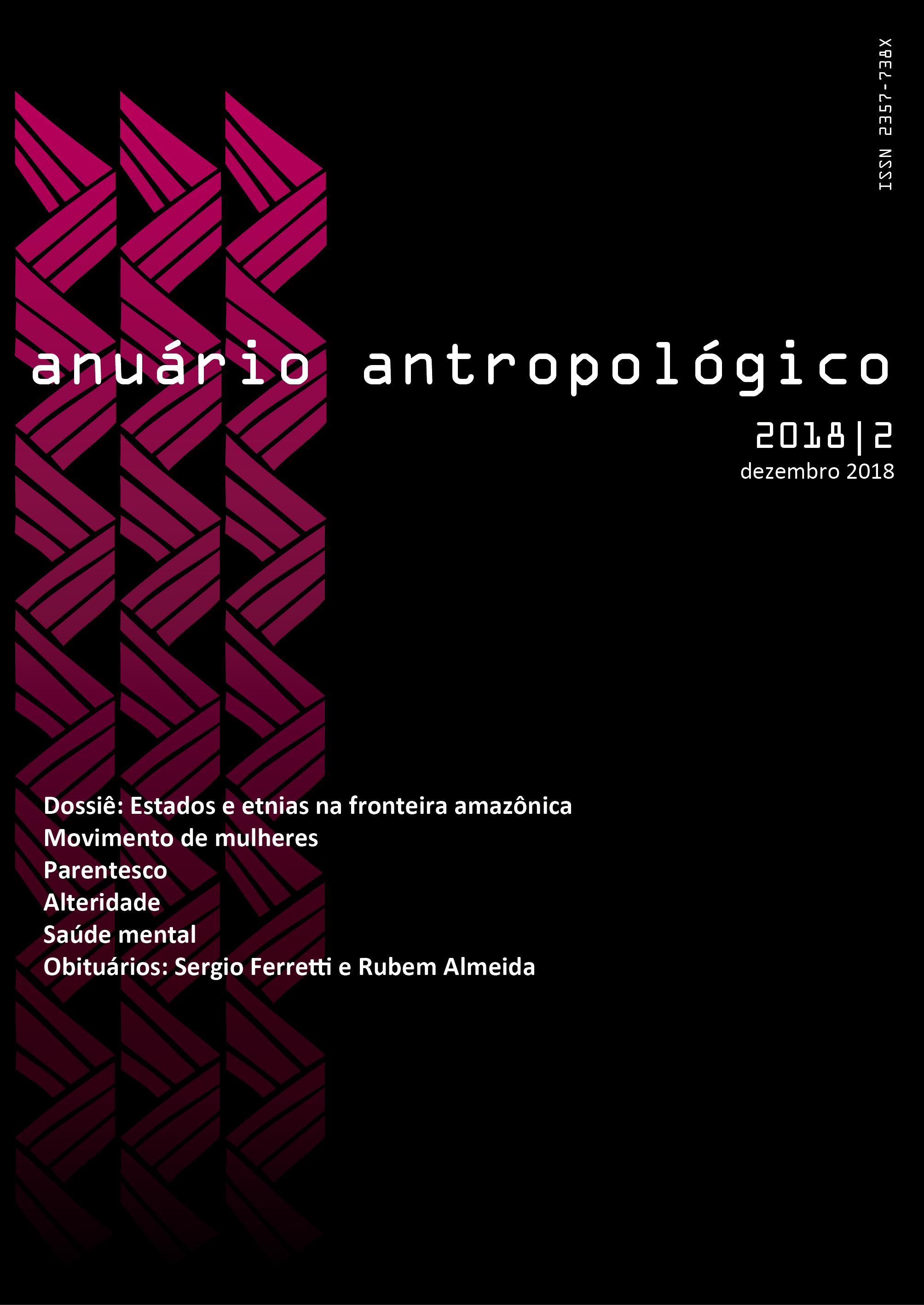Living well, dying badly
The Ashéninka of the Alto Tamaya in the borderland between Peruvian Amazon and Brazil
DOI:
https://doi.org/10.4000/aa.3223Keywords:
Ashéninka, border, community, territory, interethnic relationsAbstract
This article examines the historical, social, and political process that affected a segment of ashéninka society. It led these people to fight for and take hold of a territorial space on the frontier zone between Peruvian Amazon and Brazil. It assesses the case of the Saweto ashéninka who migrated to, and settled in the Upper Tamaya after a period, in the twentieth century, of social convulsion in their traditional lands in Peru’s Central Amazon. The ashéninka moved to the border area hoping to fulfill their aspirations. They joined new contexts of economic and political articulations both individually and collectively. They share the space with settlers and riverside people who straddle the border to extract resources in informal and illegal ways under a weak state presence. Despite their geographic marginality and distance from political and economic power, the Saweto ashéninka managed to create the native community “Peruvian centers of Alto Tamaya-Saweto” and acquire a title certificate of 80 thousand hectares. They accomplished this victory after fourteen years demanding their rights and the assassination of four of their members in 2014.
Downloads
References
ALEXIADES, Miguel. 2009. “Mobility and migration in indigenous Amazonia. Contemporary ethnoecological perspectives ”“ an Introduction”. In: Miguel N. Alexiades (comp.). Mobility and migration in indigenous Amazonia. Contemporary ethnoecological perspectives. New York & Oxford: Berghahn Books. pp. 1-43.
BROWN, Michael F.; FERNÁNDEZ, Eduardo. 1992. “Tribe and state in a frontier mosaic. The Asháninka of Eastern Peru”. In: R. Brian Ferguson & Neil L. Whitehead (comps.). War in the tribal zone. Expanding states and indigenous warfare. Santa Fe, New Mexico: School of American Research Press. pp. 175-197.
BROWN, Michael F. & FERNÁNDEZ, Eduardo. 1993. War of shadows: The struggle for utopia in the Peruvian Amazon. Berkeley: The University of California Press.
CVR. 2003. Informe Final ”“ Comisión de la Verdad y Reconciliación. Lima. Perú.
DOUROJEANNI, Marc; BARANDIARÁN, Alberto; DOUROJEANNI, Diego. 2009. Amazonía Peruana en 2021. Explotación de recursos naturales e infraestructura: ¿Qué está pasando? ¿Qué es lo que significa para el futuro? Lima: Pro Naturaleza.
GARCÃA, Pedro; HVALKOF, Søren; GRAY, Andrew. 1998. Liberation through land rights in the Peruvian Amazon. Copenhague: IWGIA.
GOW, Peter. 1991. Of mixed blood. Kinship and history in Peruvian Amazon. Oxford: Clarendon Press.
HVALKOF, Søren; VEBER, Hanne. 2005. “Los Ashéninka del Gran Pajonal”. In: Fernando Santos & Frederica Barclay (comps.). Guía Etnográfica de la Alta Amazonía. Volumen 5. Balboa: Smithsonian Tropical Research Institute. Lima: Instituto Francés de Estudios Andinos. pp. 75-279.
IBC 2014. Los papeles de la tierra. Superando los obstáculos a la titulación de las comunidades del Perú. Lima, Perú: Instituto del Bien Común.
KILLICK, Evans. 2005. Living apart: Separation and sociality amongst the Ashéninka of Peruvian Amazonia. The London School of Economics and Political Science, Ph.D Dissertation.
LITTLE, Paul. 2001. Amazonia. Territorial struggles on perennial Frontiers. Baltimore: Johns Hopkins University Press.
OSORIO, Mario L. 2012. Landscape appropriation and socio-environmental adaptability of Ashéninka people in the border area of Amazonian Peru and Brazil. University of Kent, Canterbury: Master’s thesis.
PIMENTA, José. (2002). Ãndio não é todo igual. A construção Ashaninka da história e da política. Brasília: UnB. Tese de Doutorado.
SALISBURY, David S.; BORGO, José; VELA, Jorge. 2011. “Transboundary political ecology in Amazonia: History, culture, and conflicts of the borderland Asháninka”. Journal of Cultural Geography, 28 (1): 147-177.
SANTOS, Fernando; BARCLAY, Frederica. 1995. Órdenes y desordenes en la Selva Central. Historia y economía de un espacio regional. Washington, DC: Smithsonian Institution Press/ Lima: Institut Français d’Etudes Andines.
___________. 2005. Guía etnográfica de la Alta Amazonía. Volumen 5. Campa Ribereños, Ashéninka. Balboa: Smithsonian Tropical Research Institute/Lima: Instituto Francés de Estudios Andinos.
SCHMINK, Marianne; WOODS, Charles. 1992. Contested frontiers in Amazonia. New York: Columbia University Press.
STOCKS, Anthony. 1984. “Indian policy in Eastern Peru”. In: Marianne Schmink & Charles H. Woods. (comps.). Frontiers expansion in Amazonia. Gainsville: University of Florida Press. Pp. 33-61.
VARESE, Stefano. 2006. La sal de los cerros. Resistencia y utopía en la Amazonía peruana. 4. ed. Lima: Fondo Editorial del Congreso del Perú.
VEBER, Hanne. 2009. Historias para nuestro futuro. yotantsi ashi otsipaniki. Narraciones autobiográficas de líderes asháninkas y ashéninkas de la Selva Central del Perú. Copenhague: IWGIA.
WEISS, Gerald. 2005. “Campa ribereños”. In: Fernando Santos & Frederica Barclay (comps.). Guía etnográfica de la Alta Amazonia. Volumen 5. Balboa: Smithsonian Tropical Research Institute/Lima: Instituto Francés de Estudios Andinos. pp. 1-74.
Downloads
Published
How to Cite
Issue
Section
License
Copyright (c) 2018 Anuário Antropológico

This work is licensed under a Creative Commons Attribution-NonCommercial-NoDerivatives 4.0 International License.

Creative Commons - Atribución-NoComercial-SinDerivadas 4.0 Internacional - CC BY-NC-ND 4.0




